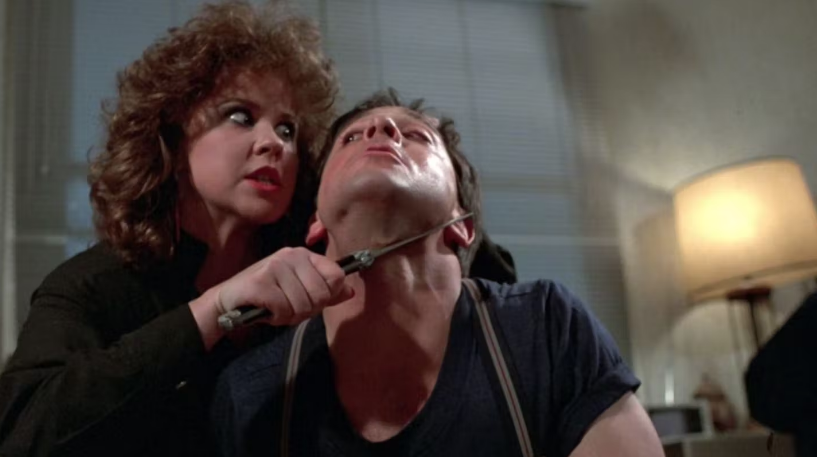The Miskatonic Institute of Horror Studies presents An Exploration of the Evolution of the Monstrous-Feminine with Bruna Foletto Lucas.
[ID: a film still showing a woman with curly brown hair wearing a black long sleeved top holding a knife to a man’s neck. She has an angry and deranged look on her face. She is wearing red lipstick. The man looks scared as his head is being pulled back by the woman. He is wearing a dark blue t-shirt with striped black and white suspenders. At the back we see a large window with blinds down and a lamp. It is switched on.']
Doors: 6.30pm [talk starts promptly at 7pm]
Tickets: £8
On the door: £12
Semester pass for all Miskatonic events at The Horse Hospital available here
Please note that this event is restricted to over 18s only.
From the amoral primeval mother in Aliens (1986), the vampire in Dracula’s Daughter (1936), the witch in Carrie (1976), and the animal in Cat People (1942), to the deadly femme castratrice in I Spit on Your Grave (1978), the aged psychopath in What Ever Happened to Baby Jane? (1962) and castrating mother in Psycho (1960) – the monstrous-feminine has been a staple in Western horror cinema since its beginning. In horror scholarship, the monstrous-feminine has been explored in a myriad of arguments, most of which stem from Freudian theories. Psychoanalytical theories argue that the female monster is born from sexual difference and is used as a way for male filmmakers to negotiate and eventually soothe their fears regarding the female body. A comprehensive (but not exhaustive) investigation of the monstrous-feminine confirms most of these theories, but leaves one question unanswered: what happens with the monstrous-feminine when directed by a woman?
It is precisely this questions that this talk aims to examine. Through an exploration of the monstrous-feminine from the 1930s onwards, the first part of this talk will establish the stereotypes, archetypes and tropes that have filled Western horror cinema and link them to horror scholarship theories. These will pose as counterpoints to which compare the role of the monstrous-feminine when written and directed by women in films from the 2000s onward. The second part of this talk will focus on the subversive reclamation of the female monster as seen in films such as Jennifer’s Body (2009), A Girl Walks Home Alone at Night (2014), Raw (2016) and Revenge (2017) while looking at recent horror theories that challenge the ahistorical psychoanalytical theories mentioned in the first part of the talk.

